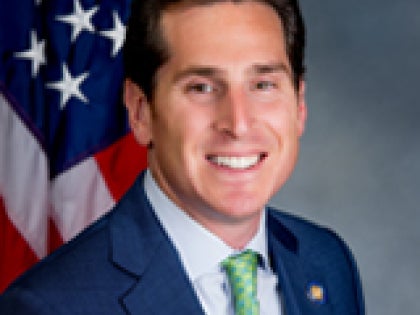
Summer Is Coming. Don’t Count on N.Y.C.’s Beaches for Relief.
For New Yorkers, a refreshing dip in the ocean at Coney Island has long been a staple of summer and a vital source of relief from the heat.
The Ramones sang of the pleasures of Rockaway Beach in Queens, and sandy salsa dancers have flocked for years to Orchard Beach in the Bronx, a stretch known to some as the Puerto Rican Riviera.
But those beloved New York City beaches will not be the same this summer.
Mayor Bill de Blasio said on Friday that opening the city’s 14 miles of public beaches was “not in the cards” by Memorial Day weekend, when they have traditionally opened for swimming, and that they would stay closed until officials were confident they could be used without a serious risk of beachgoers spreading the virus.
Mr. de Blasio’s announcement came the same day Gov. Andrew M. Cuomo said that all state-run beaches in New York would be open for swimming by the Memorial Day weekend, with restrictions in place to ensure social distancing.
The governor made his decision in concert with his counterparts in New Jersey, Connecticut and Delaware, who offered similar announcements. Mr. Cuomo said local governments could make their own decisions on opening beaches. That included New York City, whose beaches are some of the region’s most crowded.
The mayor warned that beach crowds could too easily run afoul of the strict social distancing rules that city health officials have credited with helping to bring down coronavirus infection rates in recent weeks.
Another consideration is that the beaches are mostly accessible by bus and subway, which are now primarily being used by essential workers. If people were to flock to beaches by mass transit, they would put themselves into the kind of crowded, confined spaces where the risk of spreading the virus is heightened.
Jane Meyer, a spokeswoman for Mr. de Blasio, said city officials were “putting plans into place so that we can open beaches this summer if it’s safe.”
“We are reviewing the guidelines the governor laid out and will make all decisions based on the safety of New Yorkers,” Ms. Meyer said.
The restrictions enacted to fight the pandemic have already left the city with padlocked storefronts, shuttered restaurants and bars and a diminished subway system. A delay in opening beaches, a vital cooling resource, especially for residents of modest means, adds to an already troubling scenario going into summer.
With New Yorkers largely isolated indoors for two months, summer’s approach is likely to bring them pouring out of hot apartments in search of relief and sorely needed open space.
And with warm weather predicted for this weekend, the mayor faced repeated questions about beaches at his daily news conference on Friday, after he announced a set of initiatives that included creating outdoor misters, the authorized opening of fire hydrants and, possibly, the conversion of sports arenas into cooling centers.
Mr. de Blasio has tried to strike a difficult balance between providing critical cooling options and maintaining proper social distancing rules to avoid squandering the city’s hard-fought gains in bringing infection rates down.
In the city, the epicenter of the U.S. outbreak, there had been roughly 190,000 confirmed virus cases as of Friday; over 20,000 deaths have been linked to the virus, a toll that exceeds those in all but a small number of countries.
The mayor would not elaborate on the factors involved in opening the beaches, and the city’s parks department would not comment.
But coming up with a safe plan for such an opening during hot, crowded days “is going to be a daunting task,” said Henry A. Garrido, executive director of the municipal union District Council 37, which represents parks workers.
“You’ve had people cooped up for months and you’re going to have more people than ever coming to the beach,” he said. “But there is a way to control the crowds.”
Mr. Garrido said the city’s decision on opening beaches hinged on a complicated set of considerations, including whether federal aid might arrive in time to pay for perhaps 1,000 lifeguards and hundreds of seasonal staffers, and whether ocean rescues could be carried out safely.
“If lifeguards have to physically put their arm around someone, or even perform mouth-to-mouth resuscitation, what are the regulations for that?” he said.
The decision on beaches, which can attract an estimated one million people on a hot day, drew criticism for how it might disproportionately affect New Yorkers who are unable to afford second homes, cars or even air conditioning. That is especially true since air-conditioned venues that normally offer relief — libraries, shopping malls and movie theaters — have been closed amid the pandemic.
Closing beaches, and even posting patrols, would not prevent people from slipping on to the sand and into the water on hot days, said Adrian Benepe, who served as the city’s parks commissioner from 2002 to 2012.
“People will do whatever it takes to get cool,” Mr. Benepe said. “And if you don’t open the beaches in some modified manner, they will go there anyway, requiring much more expensive resources to keep them out of the water.”
He added: “The city will still have to deploy hundreds of security and police officers to keep people off the beach, which will wind up forcing them to more dangerous places to swim.”
Many experts have said the risk of the virus being transmitted outdoors is fairly low, but rises when crowds of beachgoers lower their guard and gather closer.
The question of whether to open beaches comes as a difficult public safety scenario looms for the city when the hottest days of summer arrive.
Forced to make steep budget cuts, officials have canceled summer youth job programs. And many families that might otherwise have traveled this summer may not because of limited vacation options and financial problems tied to lost jobs.
Mr. de Blasio said last month that he would not open the city’s public pools, another vital, and free, cooling option in neighborhoods where residents also rely on hundreds of sprinklers in park playgrounds that have been closed indefinitely because of the pandemic.
These poorer areas are already reeling from a disproportionately high number of virus deaths, and residents have also accused the police of bias in their enforcement of social distancing rules.
Mark Levine, a New York City Council member who leads the council’s health committee, called the beaches the “safest relief valve” the city had left, provided that rules could be established to ensure proper social distancing.
“There are no street fairs, no block parties, and little to no summer camps,” Mr. Levine said. “We’re running out of options. All the usual ways to get relief in the summer are off the table.”
“We have to find a relief valve for New Yorkers during the summer or people are simply going to stop complying with social distancing,” he said.
Closing beaches for the summer would be calamitous for seasonal businesses in Coney Island and the Rockaways, which have experienced a resurgence in recent years as beachgoers throng local concessions and other businesses.
Some elected officials expressed concern that keeping beaches in the city closed could wind up overwhelming other beaches in the region, from the Jersey Shore to state-run beaches like Jones Beach and Robert Moses State Park on Long Island.
State Senator Todd Kaminsky, a Democrat who represents part of Long Island, said that an overflow of beachgoers would wind up flooding beaches there and create “a chaotic and untenable situation.”
Mr. Benepe said it was wrongheaded to keep the city’s beaches closed without coordinating with officials who control all nearby beaches, because “people will just flood the closest open beach.”
The city traditionally calls in a skeleton crew of senior lifeguards the weekend before Memorial Day to help prepare for opening. In a typical year, that would be this weekend.
Janet Fash, 60, a chief lifeguard at Rockaway Beach, said that she and her fellow lifeguards had not been notified about the standard pre-summer recertification test they are required to pass, or even told whether they would have jobs this summer.
“We haven’t been told anything,” said Ms. Fash, who has been a lifeguard for 40 years. If the beaches are opened, she said, “This won’t be like any other summer.”
“We can’t have crowds descend all at once on the beaches,” she said. “The parks department has to be able to manage crowds on the beach and maintain social distance.”
Mr. Benepe said that delaying a decision on opening beaches left workers and the public in limbo. “You’ve got to get the work force in place now,” he added.
“You have a situation where the beaches in the Hamptons are open but not New York City is a juxtaposition,” he said. “You’ll have wealthy people frolicking in the waves in the Hamptons and people in New York City without a way to get cool.”
